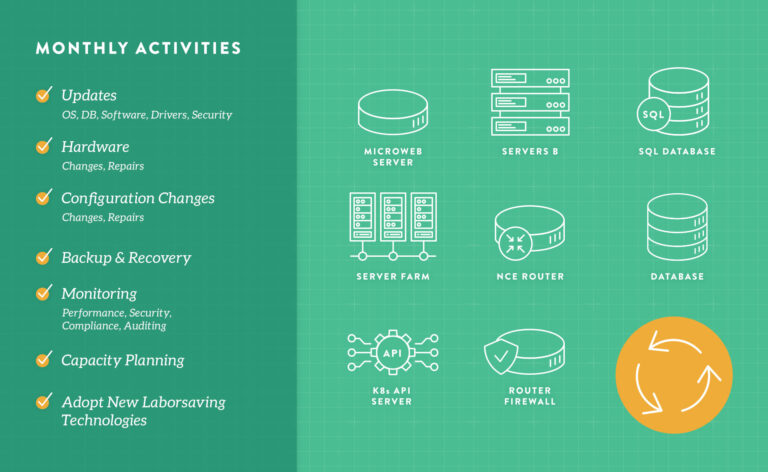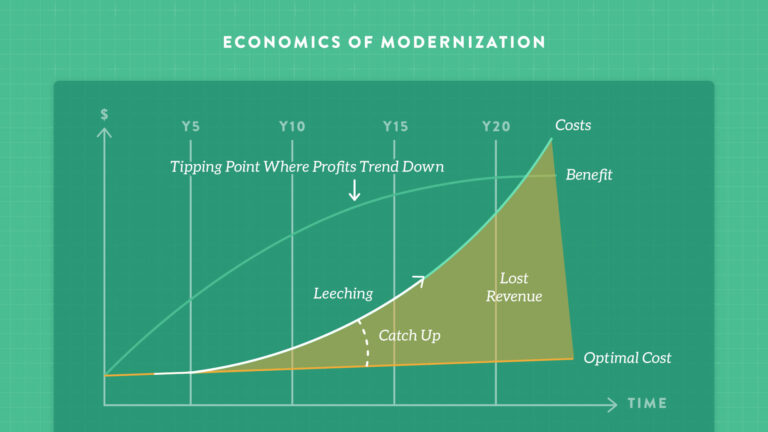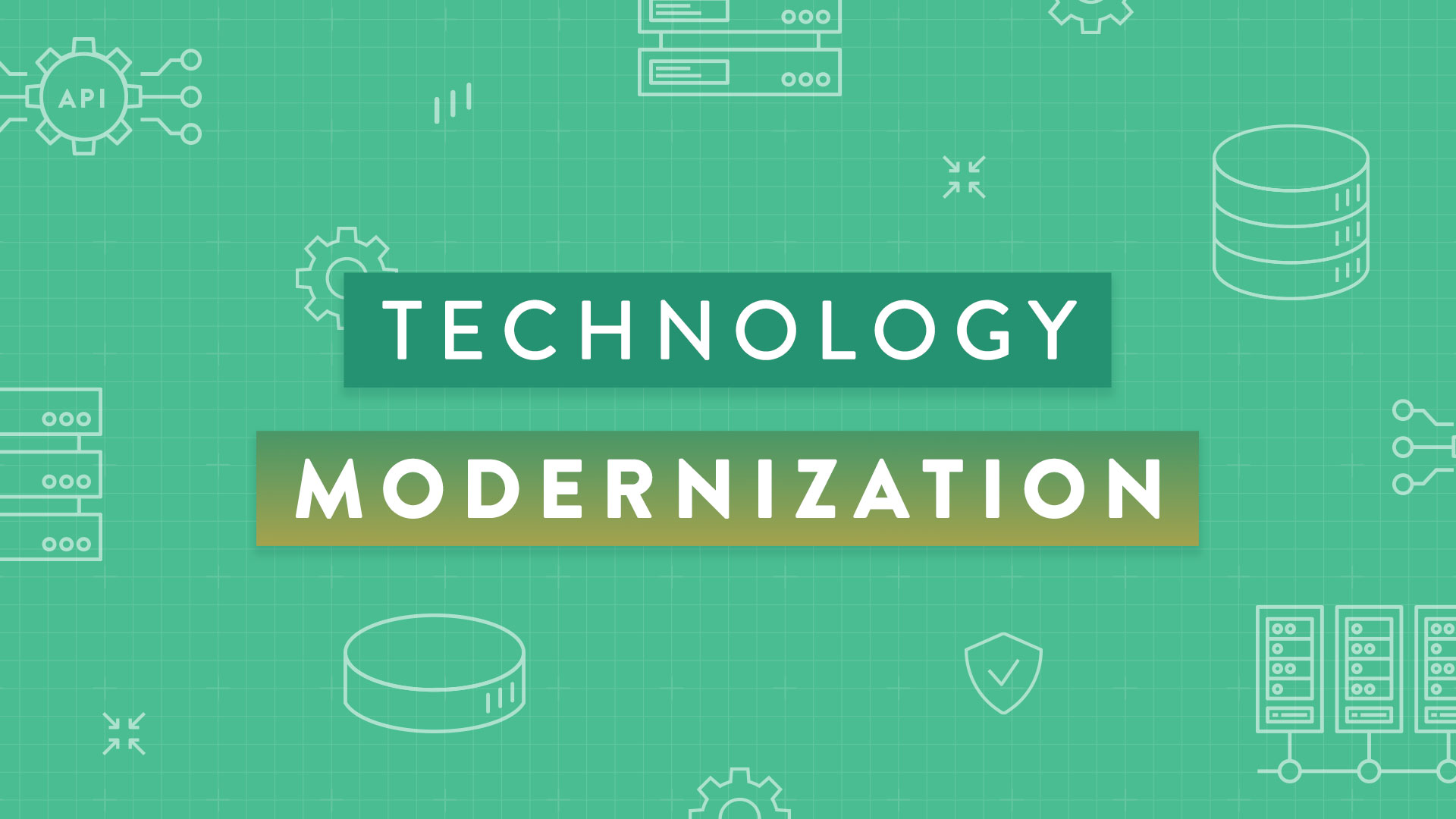Addressing the Hidden Cost of Outdated IT Systems
What is Modernization
A modern IT system is one that uses minimal and predictable effort to maintain and operate. Whenever something is acquired or created, it is normal for maintenance activities to be required to keep it operating in the same capacity as the day it became an asset. Ideally, minimal effort is spent on this routine maintenance.
Figure 1 illustrates the maintenance activities required to maintain an IT asset.

Only thirty percent of the IT industry is able to give continuous attention to technical excellence. Over time a focus on technical excellence optimizes operations costs by leveraging innovative cost saving technologies. For the rest of the industry, as the technology evolves over time, performance degrades and the effort required to maintain compliance, ensure security, and deploy enhancements grows. Unfortunately, the maintenance required for IT systems isn’t visible to the casual observer, so typically the problems have to become serious before they get attention. For businesses at this point, modernization is an event to get the IT system back into a good state. When approached correctly, modernization results in a system that is not only restored to health but also one that can be maintained with minimal effort using modern software engineering practices going forward. The goal of modernization is to restore application health and reduce the total cost of ownership.
Why Modernize
There is significant profit and developer capacity to be freed by modernizing. This is especially true in businesses that are more than 20 years old where the cost of feature delivery has been increasing over a long time.
What was once a simple feature delivery in a clean architecture and a popular development platform performed by one or two teams, over time has become extremely complex, resulting in:
- Specialized skillsets required to work old systems
- Systems architecture stored in the tribal knowledge of a few key people
- Complex, expensive, and lengthy testing and deployment processes
- Rising cost to operate and maintain the system year over year
These factors drive up the cost to release resulting in releasing less frequently, causing a slowdown in the release of new features and the loss of the revenue those features would produce.
Figure 2 below illustrates how rising operations costs are leeching profitability from your product.

A modernization initiative is a good way to catch up once you’re behind. To further optimize costs, better to continuously improve to avoid waste to begin with. (Quarterly at a minimum.) Everything between Optimal Cost and Benefit is Wasted Revenue.
The ROI of investing in modernization comes from reversing the trendline of the cost to operate your system. The goal is to return capacity back to the organization in the short run and install new software development practices that continue to improve the system’s performance and decrease the cost to operate over time.
In the illustration above, if the cost was kept close to ideal, three additional products could be operated, shifting what was historically investment in maintaining existing systems to additional revenue generating activities.
How to Modernize
Modernizing only IT systems without addressing the organizational problems that got the system in a bad state is only part of the problem. Reducing licensing costs without addressing the poor work-surface processes that are eating into profit margins leaves a large portion of the benefit unrealized. Moving a product into “the cloud” isn’t going to generate cost savings if its architecture isn’t modernized and it stays a monolith. If development team practices aren’t modernized and they are still using quality practices such as manual testing, manual deployments, and quarterly releases to production through a change approval board, the cost of feature delivery will remain expensive. Without addressing the organizational structure and how work flows across teams, dependencies between teams will continue to cause delays and slow down delivery.
Given the benefits, should everything be modernized? The reality is that resources are finite, and not every application or system will benefit enough to outweigh the cost. Simply “updating” the oldest technology, people, and processes may improve a product for the better, but it may not be money well spent any more than if a homeowner spent all their budget on building a new roof when failing plumbing continuously floods the basement. To make good investments, the big picture of the technology platform must be considered. That view, informed by data about your applications’ performance relative to the business capabilities they support, is needed to guide the decision on where to invest and how much to invest to modernize. While modernization can drive significant benefits, it’s also important to weigh those benefits against the cost to ensure investments generate the needed return.


